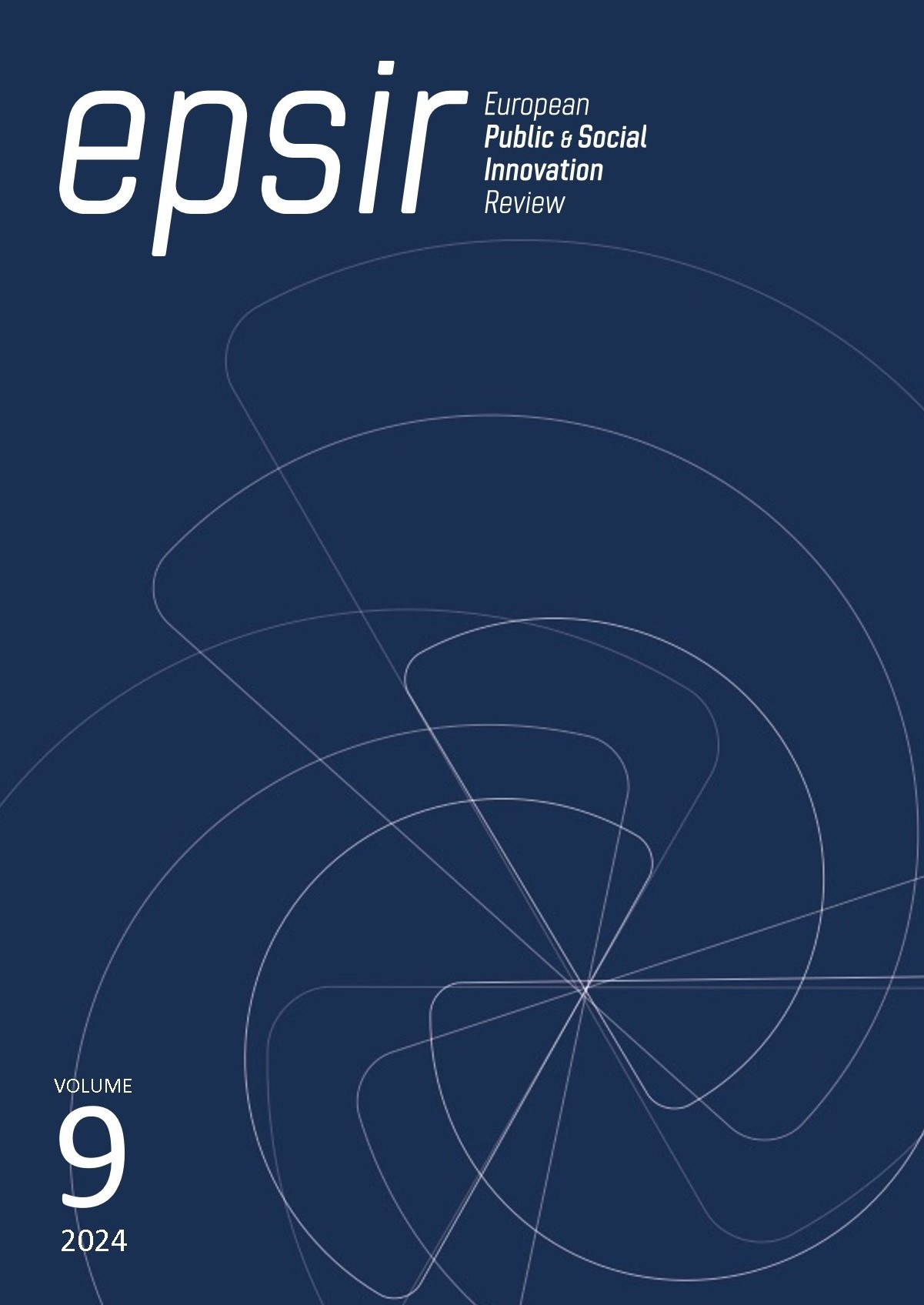Gabriela Mistral, sus fronteras y el espacio escritural practicado
DOI :
https://doi.org/10.31637/epsir-2024-1810Mots-clés :
Gabriela Mistral, espacio escritural practicado, exilio, frontera, biografía, dinámica fronteriza, cristianos y musulmanes, investigación interdisciplinar comparadaRésumé
Introducción: El objetivo de este artículo es hacer una relectura del exilio de Gabriela Mistral desde el reconocimiento a una escritora que actuaba y resistía a las vicisitudes del espacio público. Metodología: Desde un abordaje interdisciplinario, reflexionamos sobre el exilio de Mistral desde un análisis comparado en relación a las dinámicas fronterizas de la Edad Media entre cristianos y musulmanes, para así ponderar la resistencia presente en una aparente pasividad otrora adjudicada a Mistral en calidad de víctima de su destino. Resultados: El exilio en Mistral es el rechazo patente de otros a su actividad escritural lo que desestima el mito romantizado de un destino cruel insoslayable. Discusión: Las dinámicas fronterizas en el contexto del acervo escrito de Mistral dan cuenta de una escritura que se escinde de valores letrados republicanos universalizados de manera de instalar una prosa de mujer que interviene el campo cultural iberoamericano para, desde la subjetividad de su voluntad, no solo dar cuenta de las identidades que la intervienen sino representarlas y reivindicarlas en la región iberoamericana. Conclusiones: Es posible colegir que la exclusión del mito no solo permite reconocer su empoderamiento en tanto escritora sino también el intercambio intersubjetivo recíproco con su entorno.
Téléchargements
Références
Barcia, P. L. (2010). “La Prosa de Gabriela Mistral”. En G. Mistral. Antología: En Verso y Prosa. Alfaguara, Real Academia de la Lengua Española, Perú.
Cabello Hutt, C. (2015). “Prólogo a Gabriela Mistral”. En J. Concha (Eds.) Gabriela Mistral. Ediciones Alberto Hurtado.
Castillo, A. (2014). El desorden de la democracia: Partidos políticos de mujeres en Chile. Palinodia.
Certeau, M. de. (2007). La invención de lo cotidiano. Artes de hacer. (1ª ed., Vol. 1). Editorial Universidad Iberoamericana, México.
Concha, J. (2015). Gabriela Mistral. Ediciones Alberto Hurtado.
Gandarilla, J. G. (2012). Asedios a la totalidad: Poder y política en la modernidad desde un encare de-colonial. Anthropos, México.
Jiménez, Alfredo. (2001). “La historia como fabricación del pasado: la frontera del Oeste o American West”. Anuario de estudios americanos, 58(2), 737-755. https://acortar.link/I2XT0v DOI: https://doi.org/10.3989/aeamer.2001.v58.i2.222
Jitrik, N. (1970). “Para una lectura de Facundo, de Domingo F. Sarmiento”. Editorial Galerna, Buenos Aires.
Melo, D. (2020). “En torno a la frontera entre Granada y Castilla, siglos XIII-XV. Un espacio de defensa, un lugar de contacto”. En A. Calzona. y G. M. Cantarella (Eds.), Autocoscienza del territorio. Storie e miti. Dal mondo antico all'età moderna (pp. 1-23). Scripta.
Melo, D. (2011). “Un aspecto de la vida en la frontera castellano-granadina (s. XIII-XV): la acción de rastreros y redentores”. Studi Medievali, 52(2), 639-664. https://dialnet.unirioja.es/servlet/articulo?codigo=6530890
Neruda, P. (2008). Confieso que he vivido. Editorial Seix Barral.
Ortega y Gasset, J. (1996). La rebelión de las masas. Editorial Andrés Bello, Santiago de Chile.
Oyarzún, P. (2012) “Memoria, momento y lágrimas. Una aproximación especulativa al problema de las singularidades latinoamericanas”. En AA.VV. (Eds.) Seminario América 2941. Ediciones del Instituto de Arte/PUCV, Santiago de Chile.
Pizarro, A. (2005). Gabriela Mistral: el proyecto de Lucila. LOM Ediciones – Embajada de Brasil, Santiago, Chile.
Quezada, J. (2014). Gabriela Mistral: Antología de Poesía y Prosa. Fondo de Cultura Económica.
Sánchez, C. (2013). El conflicto entre la letra y la escritura: Legalidades/contralegalidades de la comunidad de la lengua en Hispano-América y América-Latina. Fondo de Cultura Económica.
Téléchargements
Publiée
Comment citer
Numéro
Rubrique
Licence
© Gabriel Arturo Farías Rojas 2024

Ce travail est disponible sous licence Creative Commons Attribution - Pas d'Utilisation Commerciale - Pas de Modification 4.0 International.
Authors who publish with this journal agree to the following terms:- Authors retain copyright and grant the journal right of first publication with the work simultaneously licensed under Creative Commons Non Commercial, No Derivatives Attribution 4.0. International (CC BY-NC-ND 4.0.), that allows others to share the work with an acknowledgement of the work's authorship and initial publication in this journal.
- Authors are able to enter into separate, additional contractual arrangements for the non-exclusive distribution of the journal's published version of the work (e.g., post it to an institutional repository or publish it in a book), with an acknowledgement of its initial publication in this journal.
- Authors are permitted and encouraged to post their work online (e.g., in institutional repositories or on their website) prior to and during the submission process, as it can lead to productive exchanges, as well as earlier and greater citation of published work (See The Effect of Open Access).




